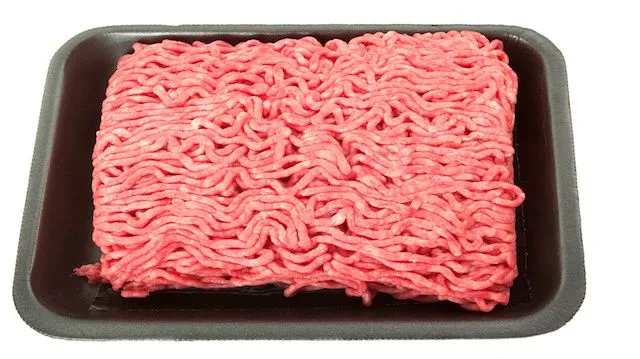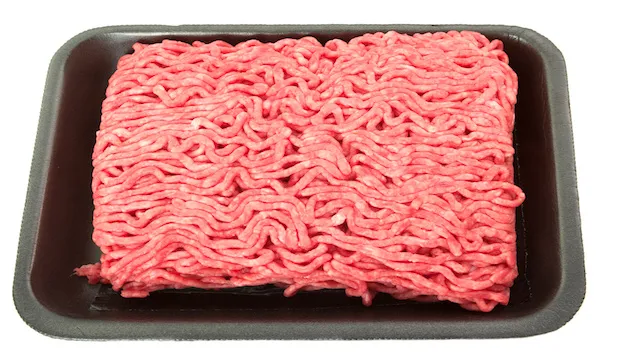
- Share on Facebook31
- Share on Pinterest
- Share on Twitter
An investigation by Consumer Reports has found that every time you eat ground meat, you are risking infection with a bacterial strain that could make you sick. Researchers examined 300 brands of ground beef from grocery stores in 26 different cities in the United States. They tested meat from confined animal feeding operations (CAFOs), lean beef, fatty beef, organic meat, grass-fed meat and everything in between. All meat tested contained strains of E. coli bacteria, which is a bacteria commonly found in feces.
What is in ground beef, anyway?
None of the meat tested contained E. coli O157, which is linked to the highest number of food poisoning outbreaks in the United States. However, all the meat did contain one or more strains of bacteria found in cow feces. Eighty-two percent of the CAFO beef had more than one strain of bacteria. Beef that was sustainably raised, but not organic, was infected with multiple strains of bacteria 58 percent of the time.
The biggest culprits found were Clostridium perfringens and Staphylococcus aureus, which cause food poisoning symptoms such as nausea, vomiting, and cramps. Up to 55 percent of CAFO beef was contaminated with these bacteria, while up to 27 percent of the sustainably-raised meat was contaminated with these bacteria. Eighteen percent of the CAFO bacteria was contaminated with antibiotic-resistant bacteria, and nine percent of sustainably-raised meat contained bacteria that was resistant to antibiotics.
 “Ground beef, like all meats, leads to a serious number of foodborne illnesses each year,” a spokesperson for Consumer Reports said in a statement about their findings. “We think consumers should buy better beef (such as sustainable labels) and handle it more safely.”
“Ground beef, like all meats, leads to a serious number of foodborne illnesses each year,” a spokesperson for Consumer Reports said in a statement about their findings. “We think consumers should buy better beef (such as sustainable labels) and handle it more safely.”
How is ground beef contaminated?
Most meat is contaminated with bacteria simply because of the way it is processed. During processing, intestines and other parts of the cow filled with bacteria can get onto other cuts of meat, which are divided into sections for sale at grocery stores. Ground meat tends to have more bacteria than slabs of meat because when the meat is ground, the bacteria mix together and are encouraged to grow. Ground meat is also processed more, which increases the risk of bacterial growth.
The bacteria likely originates when cows are held in close quarters. CAFO meat is worse because cows are held in pens and in close quarters for longer, but even sustainably-raised cows are placed in pens before slaughter.
Reduce your infection risk
The study authors recommend purchasing organic, grass-fed meat when possible. This meat is less likely to be contaminated with bacteria. However, all ground meat is contaminated to some extent. The best way to prevent risk is to purchase whole pieces of meat and grind it at home. This will reduce the risk as much as possible.
You can also prevent infection by implementing the following safety techniques:
- Wash hands before and after handling raw meat.
- Keep meat away from other foods.
- Wash all utensils immediately after using them on raw meat.
- Cook all ground meat to 160 degrees Fahrenheit.
- Never eat ground meat that is pink.
- Keep ground meat cold until you cook it.
- Cook or freeze your ground meat within 1–2 days after purchasing it at the grocery store. This prevents some spread of bacteria.
Another option to increase safety is to purchase minimally-processed meat. You can do this by finding a local farmer who sells sustainably-raised and organic meat as half cows, quarter cows, or in other large quantities. Many farmers will be happy to cut meat into smaller pieces for you to take home, which you can then freeze for later use. This eliminates much of the time that bacteria needs to spread and contaminate your meat. It will also taste much fresher.
If you implement these steps, you are less likely to contract food poisoning from your ground meats.
—The Alternative Daily
Source:
http://www.consumerreports.org/cro/food/how-safe-is-your-ground-beef.htm
- Share on Facebook31
- Share on Pinterest
- Share on Twitter

